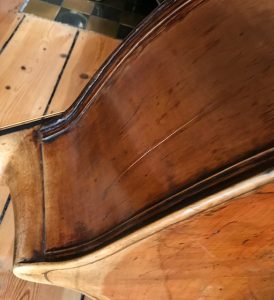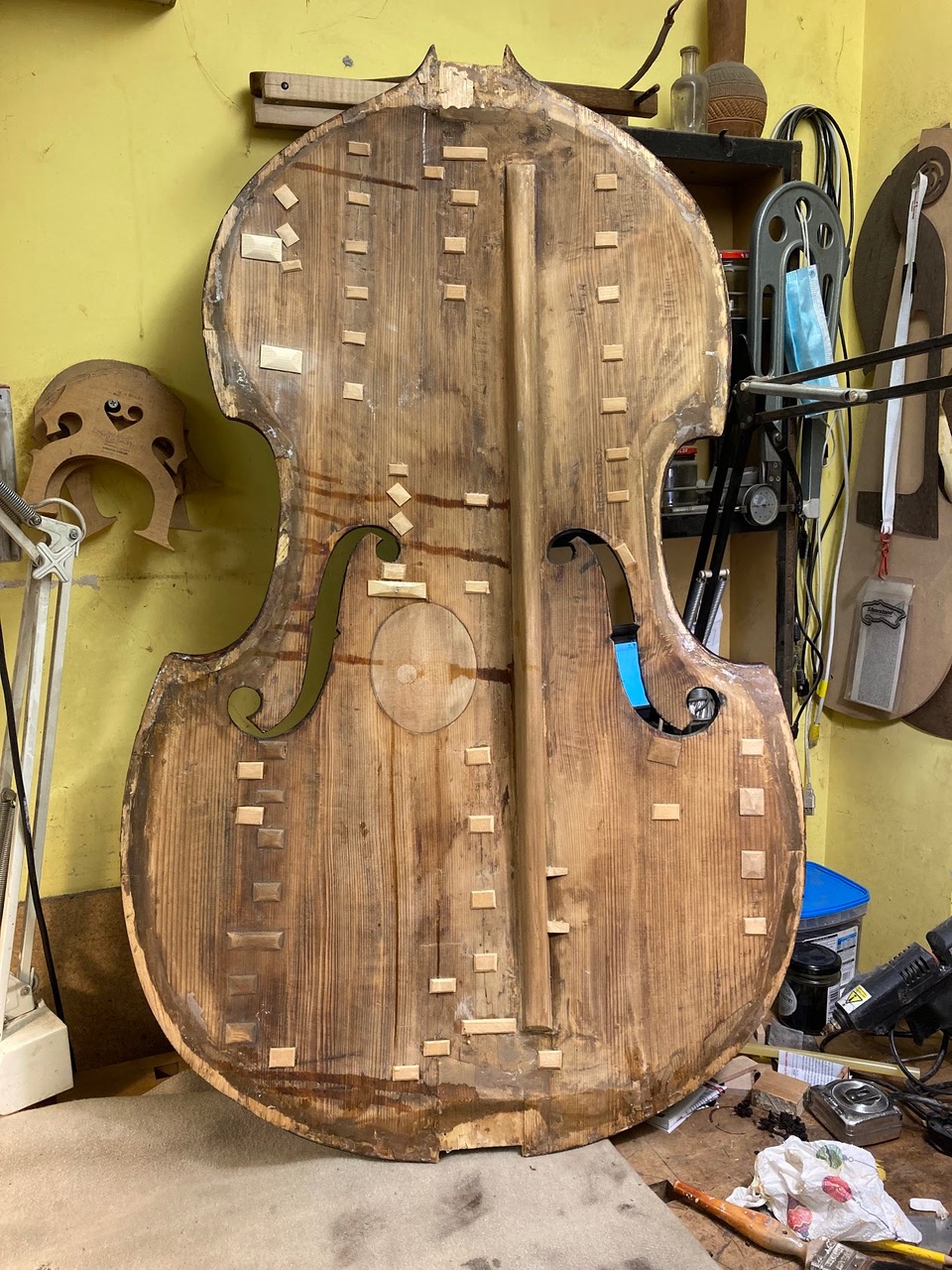A small crack, 6″ or so, appeared in the upper rib of my bass last summer (see below). Don’t know how. Although relatively minor damage, it required significantly more major attention to repair it properly. This involved removing the front or belly of the instrument to access the crack. And then to glue with some small wooden cleats, clamp, and replace and reset.
Excellent Essex-based luthier (and double bass specialist) Martyn Bailey did the work. He had done a brilliant and sympathetic new set-up on it a year or so ago, including a new bridge and shaving the fingerboard, and taking into account my need for a really low action for maximum ease of playing with diminishing physical strength. So pleased I found him. It’s fair to say that he has kept me playing.
While the front was off Martyn took this photo of the inside. It shows around 150 years or more of damage and repair on the front alone, including a soundpost patch at one stage (the oval shape between the f-holes), as well as getting on for 60 cleats glued on various cracks and dints. (I did count these and thought of my age and body state, though I’m trying to avoid the metaphoric pull.) This is pretty much par for the course for basses of this era, as you can see by looking at other such photos on Martyn’s website. Alas no original maker’s label (every bassist wants to know the name, place, year!) or previous repairers’ marks.
The bass bar (the thin strip running vertically on the right) is original. The front is probably spruce, most of the rest of the bass maple, with ebony used for the fingerboard, tailpiece and top nut. All these resonance woods. A German bass. There are drips of varnish I guess that give it a touch of an action painting. Martyn took the opportunity to glue up some other potential cracks and previous repairs while he was at it (‘off-glue’ being the term used by luthiers to refer to where parts of an instrument have come unstuck, and often started buzzing).
It’s always animal glue. I did wonder to Martyn, slightly tongue-in-cheek, if any vegetarian or vegan alternatives were available and he said no-one had ever asked him that before. I’m always amazed by the fact that the pressure and tension of these stringed (highly strung) old instruments are simply held together by … animal glue.
I love this glimpse into, well, the underbelly. Another world I am in contact with daily, but unseen. A secret material history.
Also, praise be to my insurance company!


